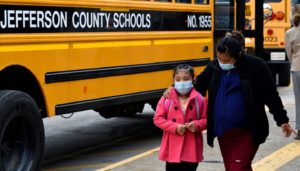Report: Washington schools superintendent not sufficiently tracking $3B in federal aid
(The Center Square) – A new state study looking at school closures during the COVID-19 pandemic and its impact on minority students found that the Washington Office of the Superintendent of Public…

(The Center Square) – A new state study looking at school closures during the COVID-19 pandemic and its impact on minority students found that the Washington Office of the Superintendent of Public Instruction wasn’t adequately tracking school districts’ spending of nearly $3 billion in federal aid.
OSPI received $2.9 billion in federal Elementary and Secondary School Emergency Relief funds, according to the preliminary report conducted by the Joint Legislative Audit and Review Committee, distributed in three rounds in July 2022, March 2021, and July 2021.
The report notes that federal law requires 90% of these funds to be passed on to school districts, which must spend at least $334 million to address learning loss and the disproportionate effects the pandemic had on certain racial and ethnic groups.
OSPI has not yet established a process to measure outcomes of ESSER spending, per the report, and there is insufficient state-level detail to identify how much money is being spent – $1.2 billion as of September 2022 – on specific interventions.
“OSPI tracks district spending using broad categories consistent with state and federal requirements,” the report notes. “These categories do not provide sufficient detail to identify the amount spent on specific educational interventions.”
The report says, “the third round of ESSER funding included funds allocated for addressing learning recovery. Districts report learning recovery expenditures in five categories: one-time contracts for staff, professional learning for educators, real-time data systems, other direct supports, or other uses not included above.”
As of September 2022, the report said, “districts reported 74% of expenditures as ‘other direct supports’ or ‘other.'”
That classification means the department can’t determine how much districts spent on the interventions identified in their plans, “such as tutoring, additional instructional time before school, or social-emotional learning.”
A representative with OSPI provided some relevant information regarding the JLARC preliminary report’s findings in this regard.
“It’s important to recognize that we already have systems in place for measuring and monitoring student outcomes at the state level: graduation rates, assessment scores, attendance/absence rates, and a host of other data points that school districts are required to report to the state,” Katy Payne, OSPI’s executive director of communications, told The Center Square in an email. “Our statewide assessments last school year from fall to spring demonstrated important learning recovery across the state following the pandemic, and we fully expect additional gains to be demonstrated in the assessments this spring.”
OSPI is on top of the situation, she said.
“To provide some additional context: When providing school districts with these emergency relief dollars, the federal government was intentional in keeping the allowable uses exceedingly flexible in order for districts to meet the unique needs of their students and communities,” Payne explained. “We have collected and reported districts’ uses of the dollars aligned to federal requirements (see this dashboard) and have adjusted our regular monitoring process of school districts (which preceded the pandemic) to include monitoring of ESSER funds.”
The study found that test scores dropped for all ages, races, and ethnic groups due to closed schools during the pandemic. Students from the state’s poorest school districts and those with the highest minority populations suffered the most learning loss.



